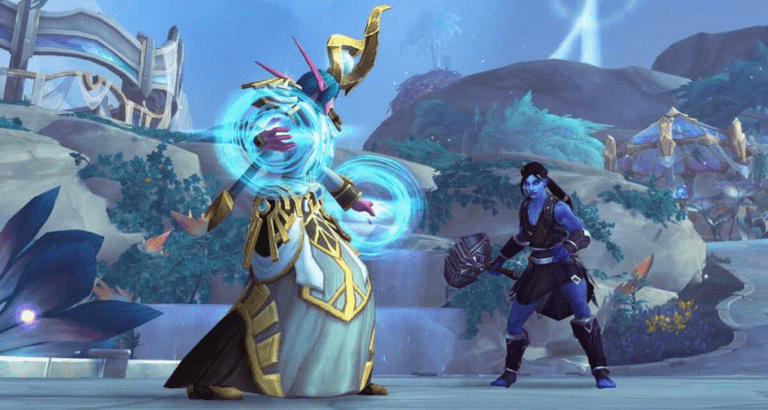Takeaway
Unity 3D has emerged as a leading platform for developing cross-platform games, enabling developers to create engaging, high-quality experiences that reach a diverse audience. With its robust features, extensive asset store, and strong community support, Unity empowers developers to leverage advanced technologies such as AR, VR, and machine learning, making it an essential tool in the modern game development landscape.
In the rapidly evolving world of game development, Unity 3D stands out as a powerful engine that allows developers to create immersive and engaging cross-platform games. With its user-friendly interface, extensive documentation, and a vast array of tools, Unity has become the go-to choice for both indie developers and large studios alike. This article delves into the technical aspects of Unity 3D development, exploring its capabilities, real-world applications, and the future of game development in a cross-platform environment.
Understanding Unity 3D: A Technical Overview
Unity 3D is a cross-platform game engine developed by Unity Technologies, first released in 2005. It supports a wide range of platforms, including Windows, macOS, Linux, iOS, Android, and various gaming consoles. The engine is built on a component-based architecture, allowing developers to create complex game systems by combining simple, reusable components. This modular approach not only enhances productivity but also simplifies the debugging and maintenance processes.

One of the key features of Unity is its powerful rendering engine, which supports both 2D and 3D graphics. Unity utilizes a physically-based rendering (PBR) system that simulates real-world lighting and materials, providing developers with the tools to create visually stunning environments. The engine also supports advanced graphical techniques such as dynamic shadows, reflections, and post-processing effects, which can significantly enhance the player’s experience.
Cross-Platform Development: The Unity Advantage
Cross-platform development is a critical aspect of modern game design, as it allows developers to reach a broader audience by deploying their games on multiple platforms. Unity’s built-in support for cross-platform development simplifies this process, enabling developers to write code once and deploy it across various devices with minimal modifications.
According to a report by Statista (2023), mobile gaming accounted for approximately 50% of the global gaming market, highlighting the importance of cross-platform capabilities. Unity’s ability to seamlessly transition between platforms is a significant advantage, as it allows developers to tap into this lucrative market without the need for extensive platform-specific coding.
Real-World Examples of Cross-Platform Success
Several successful games have leveraged Unity’s cross-platform capabilities to achieve widespread acclaim and commercial success. One notable example is “Hollow Knight,” developed by Team Cherry. This critically acclaimed indie title was released on multiple platforms, including PC, Nintendo Switch, PlayStation, and Xbox, thanks to Unity’s robust cross-platform support. The game has sold over 3 million copies worldwide, demonstrating the potential of Unity for indie developers.
Another example is “Cuphead,” developed by Studio MDHR. This visually striking game, known for its hand-drawn animation style, was developed using Unity and successfully launched on PC, Xbox, and Nintendo Switch. The game’s unique art style and engaging gameplay have garnered numerous awards, further solidifying Unity’s reputation as a powerful tool for creating cross-platform games.

Developed in Unity, Cuphead proves its strength in cross-platform gaming.
Advanced Features and Tools in Unity 3D
Unity 3D offers a plethora of advanced features and tools that enhance the game development process. Some of the most notable include:
1. Unity Asset Store
The Unity Asset Store is a marketplace where developers can buy and sell assets, including 3D models, animations, scripts, and sound effects. This vast library of resources allows developers to save time and effort by utilizing pre-made assets, enabling them to focus on the creative aspects of game development. As of 2023, the Asset Store boasts over 50,000 assets, catering to a wide range of genres and styles.
2. Unity Collaborate
Unity Collaborate is a cloud-based service that facilitates team collaboration during the development process. It allows multiple developers to work on the same project simultaneously, streamlining version control and reducing the risk of conflicts. This feature is particularly beneficial for larger teams or remote developers, as it simplifies the workflow and enhances productivity.
3. Machine Learning and AI Integration
Unity has made significant strides in integrating machine learning and artificial intelligence into game development. The Unity ML-Agents Toolkit allows developers to create intelligent agents that can learn and adapt to their environment through reinforcement learning. This capability opens up new possibilities for creating dynamic and responsive gameplay experiences, as seen in games like “Unity’s own demo project, “Tennis for Two,” which showcases AI-driven opponents that adapt to player strategies.
The Future of Game Development with Unity
The future of game development is poised for exciting advancements, particularly with the continued evolution of technologies such as augmented reality (AR) and virtual reality (VR). Unity has positioned itself as a leader in these fields, providing developers with the tools necessary to create immersive experiences that blur the lines between the digital and physical worlds.
According to a report by Newzoo (2023), the global AR and VR gaming market is expected to reach $12 billion by 2024, driven by advancements in hardware and software. Unity’s commitment to supporting AR and VR development through its AR Foundation and XR Toolkit makes it an ideal choice for developers looking to capitalize on this growing market.
Key Points to Consider
- Unity 3D is a versatile game engine that supports cross-platform development, allowing developers to reach a wider audience.
- The engine’s component-based architecture simplifies the development process and enhances productivity.
- Real-world examples like “Hollow Knight” and “Cuphead” demonstrate Unity’s effectiveness in creating successful cross-platform games.
- Advanced features such as the Unity Asset Store, Collaborate, and machine learning integration provide developers with powerful tools to enhance their projects.
- The future of game development with Unity is bright, particularly in the realms of AR and VR, which are expected to see significant growth in the coming years.
In conclusion, Unity 3D has established itself as a leading platform for developing engaging cross-platform games. Its robust features, extensive asset store, and strong community support make it an invaluable tool for developers looking to create high-quality gaming experiences. As the industry continues to evolve, Unity’s commitment to innovation and support for emerging technologies positions it as a key player in the future of game development. By leveraging Unity’s capabilities, developers can craft compelling games that resonate with players across various platforms, ultimately driving success in an increasingly competitive market.

